Those Cakes We Like … Have The Solution!
When the government gives us lemons (and you can't afford eggs), we make vegan lemon drizzle cake!
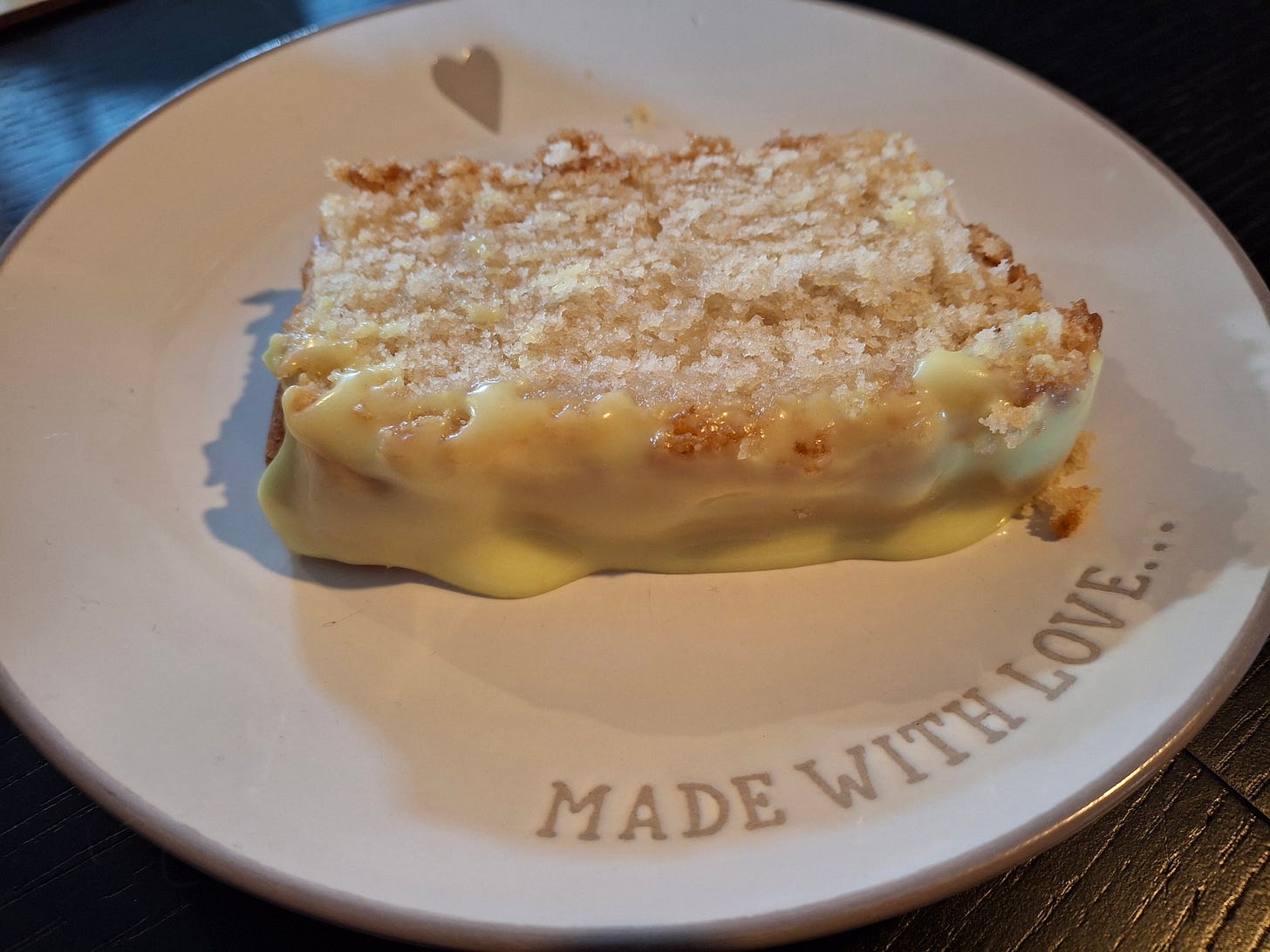
Egg prices are rising, tariffs are being slapped on everything, and people are starting to feel the effects of electing Spraytantrum, the poster boy for Dunning-Kruger Syndrome, as the President of the United States of America. I think we could all use a little pick-me-up right about now. The good news is that I have the perfect recipe for this, a vegan lemon drizzle cake — no need to go out and sell a kidney so that you can afford to buy eggs, or use up your valuable egg supply for baking when they could be thrown at passing Swasticars instead.
A Little Slice of History
The origins of Lemon Drizzle Cake are a bit cloudy, but it is thought that this cake evolved from the Pound Cake, a simple heavy cake that has existed since the 18th century. Pound Cake was first created in England and was an easy way to feed a large group of people using very basic ingredients. The very first written recipe for Pound Cake appeared in 1747, in Hannah Glasse’s The Art of Cooking Made Plain and Easy. Its name derived from the fact that the recipe called for exactly one pound (that’s lb, not sterling) of each of the ingredients; flour, sugar, butter, and eggs. Pound Cake has become a staple of global baking, making its way into kitchens all over the world, where the recipe has been adapted to suit local tastes with the addition of fruits and spices, or cornmeal.
The credit for taking the simple Pound Cake and creating the taste sensation that is the Lemon Drizzle Cake goes to one Evelyn Rose, who had the brilliant idea of adding lemon zest and juice to the basic recipe in 1967. We haven’t looked back since then: Lemon Drizzle Cake has become a staple of the Afternoon Tea and a favourite sweet treat which is especially popular on Mother’s Day in the UK. It does pair very well with a nice brew (British for “cup of tea”). Earl Grey is usually recommended, however I would be a traitor to my county of birth if I didn’t recommend a nice cup of Yorkshire Tea, or Yorkshire Gold if you can find it in a grocery store near you.
Due to the current situation with Bird Flu in the USA, and the effect it’s having on egg prices, I’m choosing to provide you with an egg-free recipe for this delightful cake. It is a vegan recipe, and can be made gluten free by simply changing the flour and baking powder to a gluten free variety.
For my fellow diabetics: This cake will serve 12 with 63.7g of carbohydrates per slice, or 764g for the whole cake.
Your Equipment
Digital Kitchen Scales
Large Mixing Bowl
Wooden Spoon
Measuring Jug
1 lb Loaf Tin
Baking Parchment
Wooden Skewer (the type you use for kebabs works perfectly)
Your Ingredients
For the cake:
100 ml Vegetable Oil, or other neutral flavoured oil
275 g Self-Raising/Rising Flour
200 g Sugar
1 tsp Baking Powder
1 Lemon (zest), ½ Lemon (juice)
For the drizzle:
50 g Sugar
½ Lemon (juice)
For the frosting:
150g Powdered/Confectioner’s/Icing Sugar
½ Lemon (juice)
Yellow Food Colouring (optional)
The Important Bit
Preheat your oven to 360F/180C and line your loaf tin with baking parchment. A little bit of oil on the tin will help the parchment to stick, I use spray oil for this as it’s easier than brushing the tin with oil.
Weigh out your dry ingredients into your mixing bowl and carefully measure out your oil. Add the lemon juice, oil, and 170 ml of cold water to the dry ingredients and mix with a wooden spoon until you have a smooth cake batter.
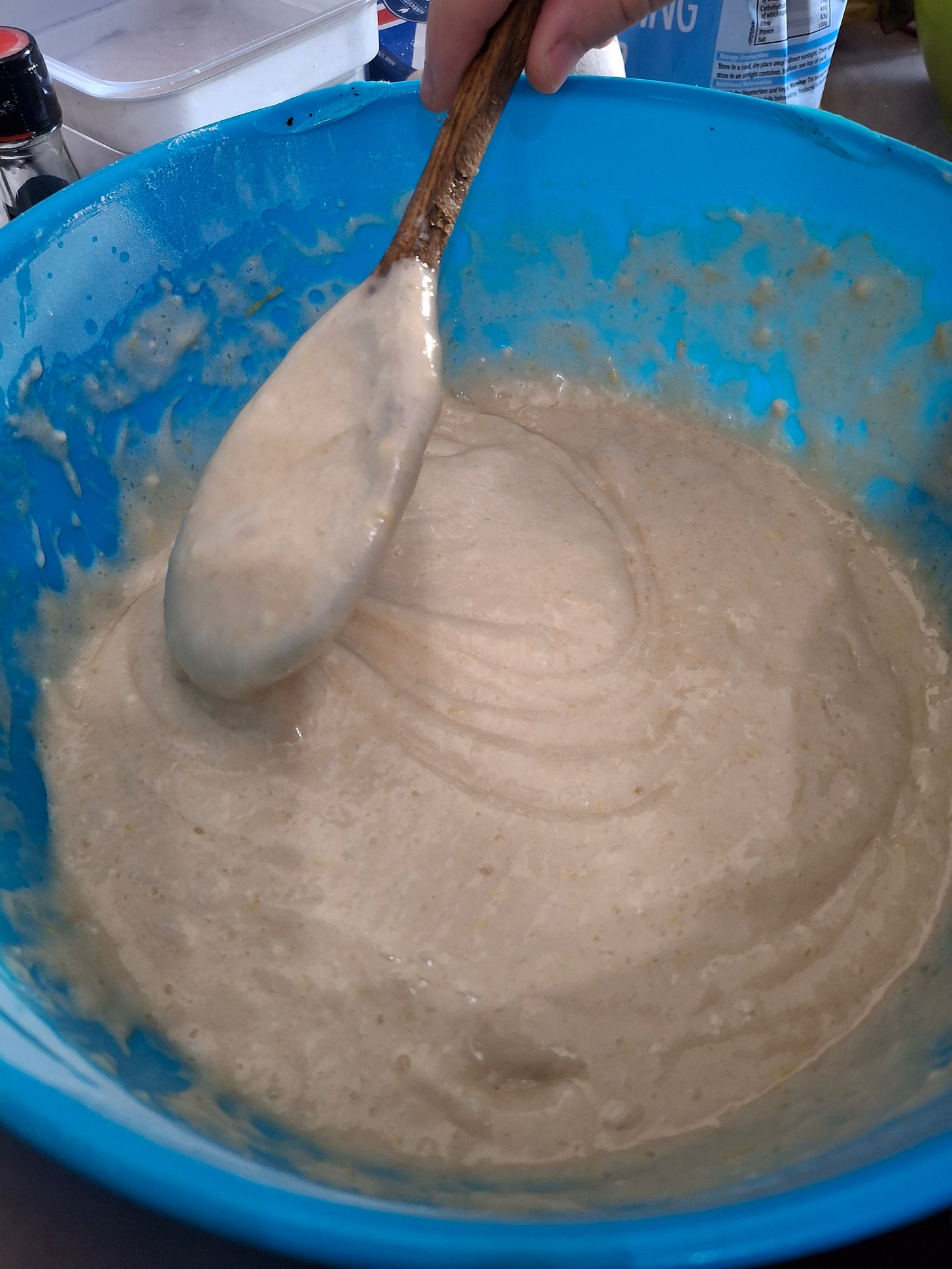
Transfer the cake batter to your loaf tin, smooth the top using your wooden spoon (this does not need to be perfect) and place in the oven for 40 minutes.
Remove the cake from the oven, checking whether it is done by inserting a wooden skewer into the centre of the cake; if there is cake batter on the skewer when you pull it out then return the cake to the oven for another 10 minutes.
Mix together your drizzle by combining the sugar and lemon juice in a small bowl or jug.
Pierce the top of your cake with the skewer and pour the drizzle over the cake. Now leave it to cool.
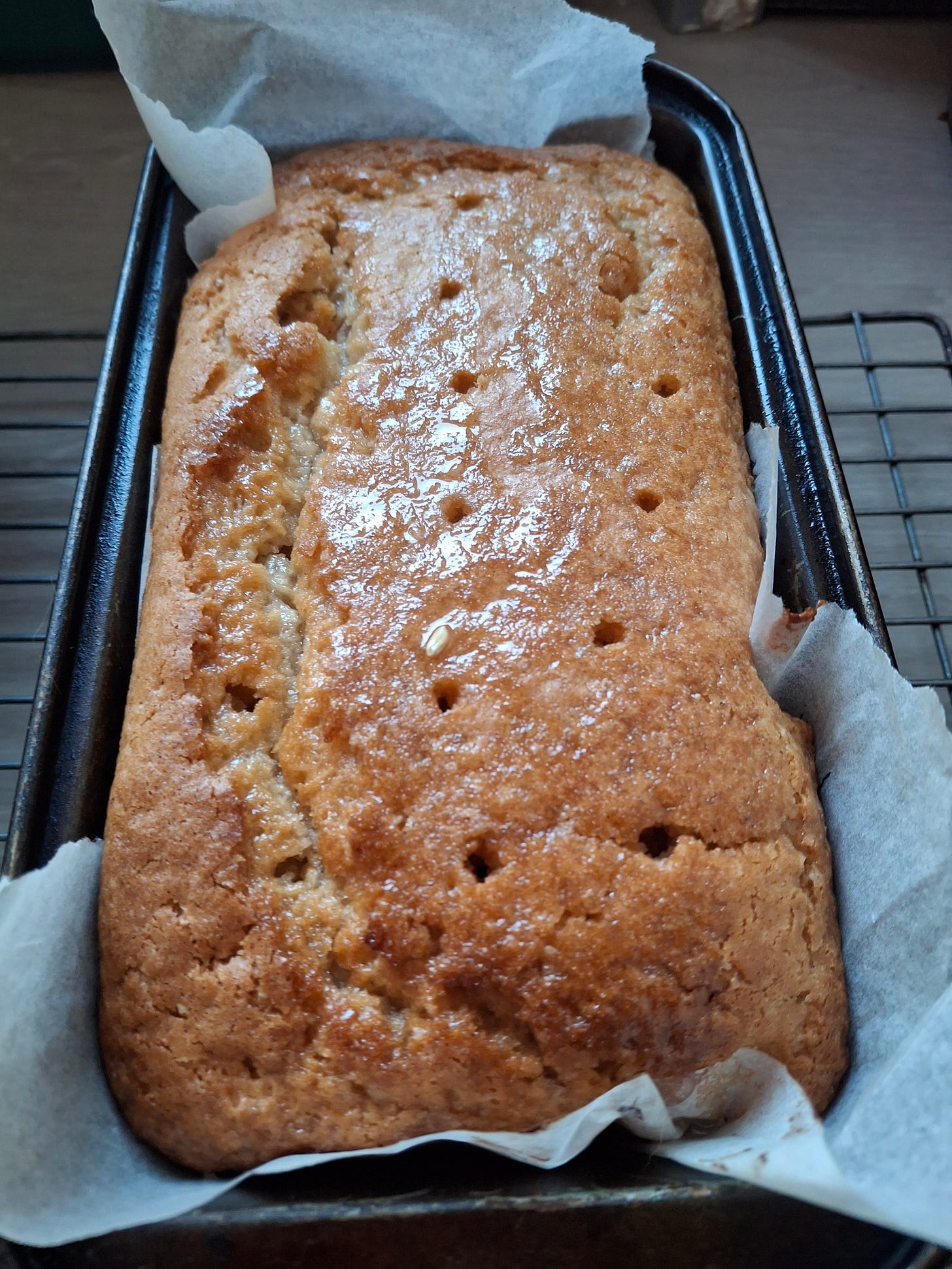
Mix your frosting in a small bowl by stirring the lemon juice into the powdered sugar until it creates a smooth, runny paste. Add a touch of yellow food colouring if you want to.
Pour the frosting over the top of your cake. I like to do this so the icing drips down the side of the cake in places for no reason other than I think it looks decadent.
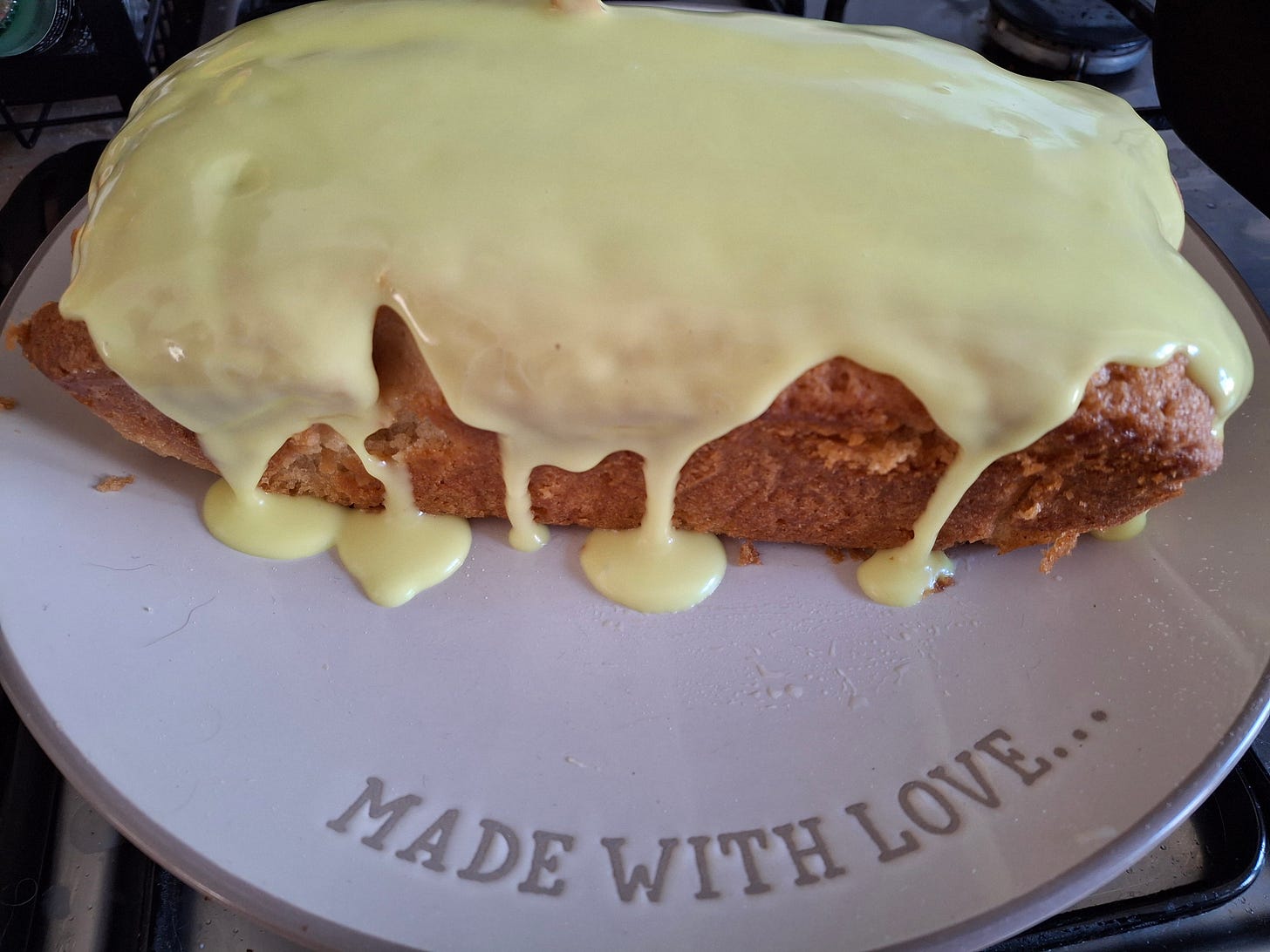
You can leave the frosting to set for a few hours, or serve it straight away if you don’t mind it being a little sticky. Don’t forget your cup of tea*.
Settle down and enjoy your cake. Or share it with a few friends. You don’t need to tell anyone how easy the recipe was, just let them marvel at your baking prowess.
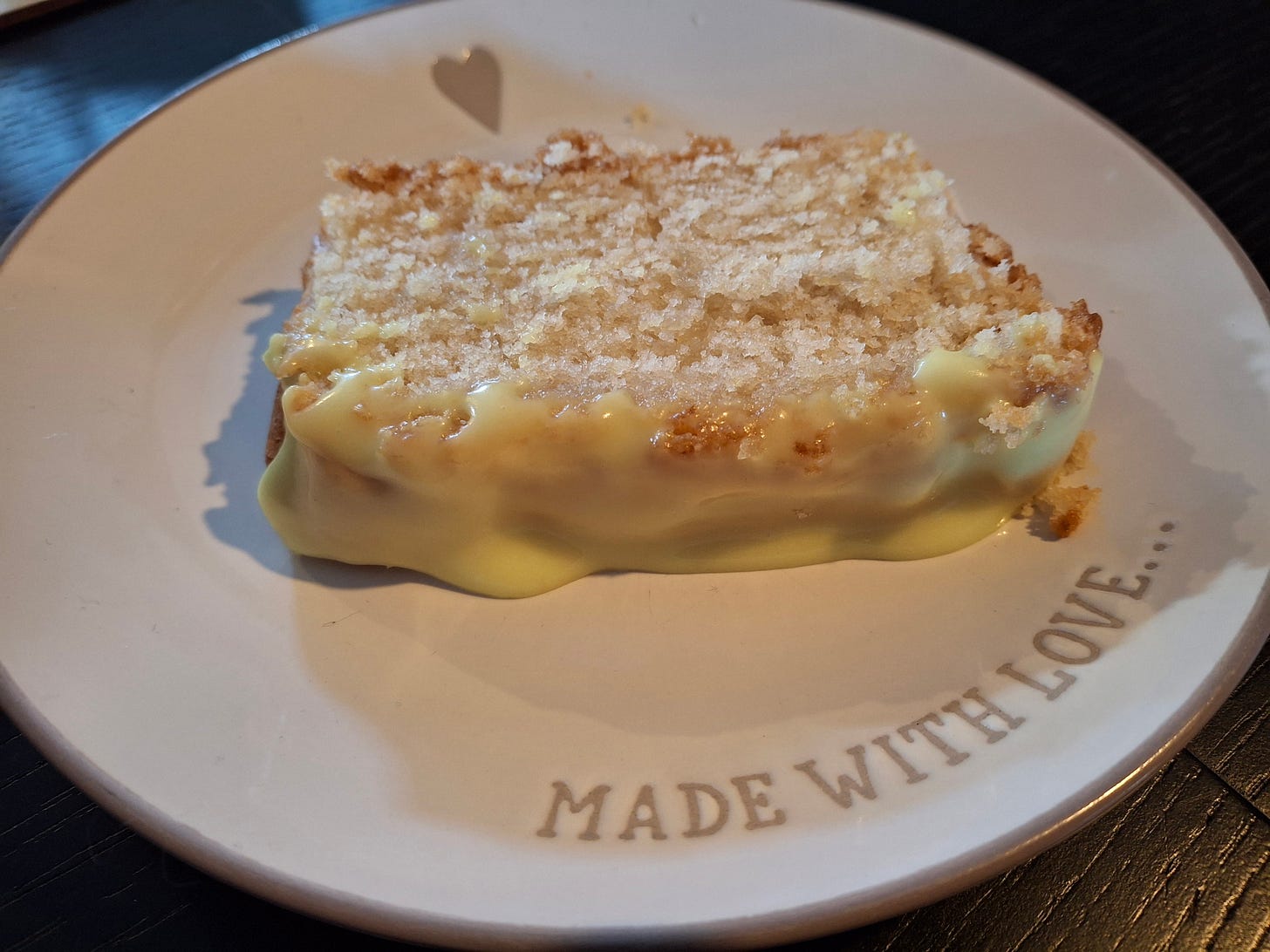
Join me next month for a British regional specialty and one of my favourite treats, the traditional Bakewell Tart.
*Please note that in the UK it is considered a serious crime to make a cup of tea in the microwave. The water should be boiled in a kettle (a pan will suffice if you do not have a kettle), then poured over the tea bag. The teabag should be left to steep in the hot water for at least 2 minutes, longer if you want a strong brew, then the tea bag should be removed before milk and sugar is added to your taste. You stir the tea when the milk is added. This is very important if you wish to remain in the good graces of any friends from the UK.

Please consider donating to Wonkette if you can. You can donate any amount you want, it all helps keep the cakes coming. Use this handy button right here…
Or there’s this one…



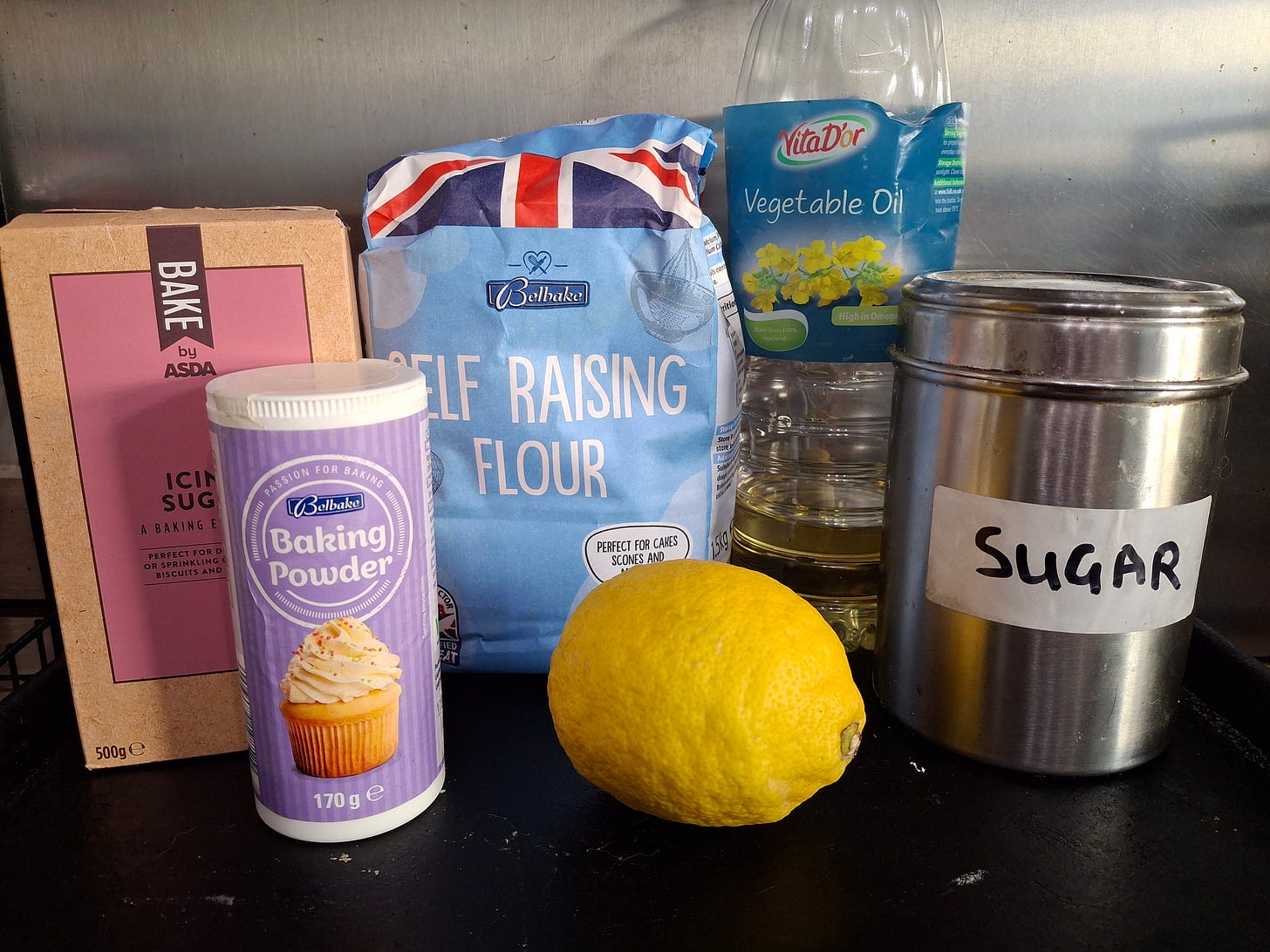
I believe self-raising flour is called bootstraps-flour in red state grocery stores now.
Gonna get me a set of dessert plates that say "Made With Contempt."
You know who you are.